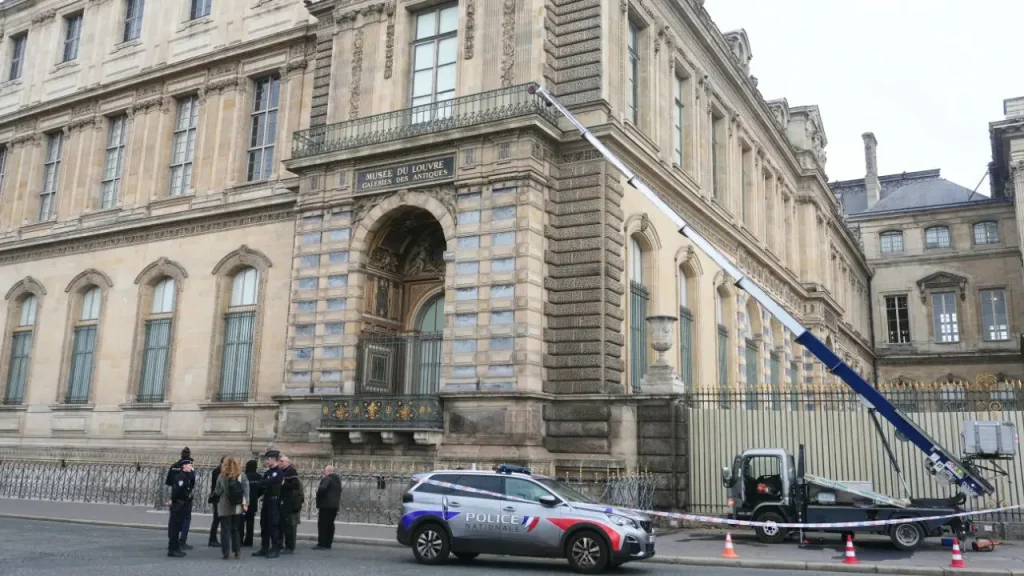Louvre Museum Faces Security Crisis Following $100 Million Jewelry Heist
In a somber public address following one of the most significant art heists in recent history, Louvre Museum director Laurence des Cars confronted what she described as a “terrible failure” of security that allowed thieves to steal over $100 million worth of historical jewels. “Despite our efforts, despite our hard work on a daily basis, we failed,” des Cars admitted, her words reflecting the profound sense of responsibility felt by the museum’s leadership. The confession came as details emerged about critical security vulnerabilities at the world’s most visited museum, including the revelation that the only external camera monitoring the building was pointed away from the balcony the thieves used to access the gallery housing these precious artifacts. This stunning security oversight occurred despite the director’s confirmation that all the museum’s alarm systems were functioning properly during the burglary, raising serious questions about the comprehensive nature of the Louvre’s security protocols.
The audacious theft, which took place on Sunday, demonstrated both sophisticated planning and brazen execution. According to Paris prosecutor Laure Beccuau, the thieves employed a truck-mounted electric furniture lift to carry out the heist, having obtained the equipment under the false pretense that it was needed for a moving job. This methodical approach allowed the burglars to bypass conventional security measures and access areas of the museum that would otherwise be unreachable. The stolen collection includes eight priceless historical pieces, among them a sapphire diadem, necklace, and earring associated with 19th-century queens Marie-Amélie and Hortense. Also taken were an emerald necklace and earrings connected to Napoleon Bonaparte’s second wife, Empress Marie-Louise, a reliquary brooch, and Empress Eugénie’s diamond diadem along with her corsage-bow brooch – all pieces of extraordinary historical significance and exceptional craftsmanship.
The theft has struck at the heart of French cultural identity, prompting French President Emmanuel Macron to declare on social media: “The theft committed at the Louvre is an attack on a heritage that we cherish, for it is our history.” His statement reflected the national sentiment that these jewels represent more than mere valuables – they embody France’s imperial past and national narrative. Macron pledged that authorities would recover the works and bring the perpetrators to justice, emphasizing that “everything is being done, everywhere” to achieve this goal. The Paris prosecutor’s office has taken the lead in this investigation, which has now expanded to involve 100 investigators, up from the initial 60, highlighting the case’s significance at both national and international levels.
The scale of the heist’s impact on French cultural consciousness cannot be overstated, with some officials comparing the psychological shock to the devastating 2019 fire that damaged Notre Dame cathedral. Both events represent profound wounds to landmarks that define French cultural identity and serve as repositories of national memory. The director’s admission that “we failed these jewels” carries the weight of historical responsibility, acknowledging that the museum’s primary mission – to protect and preserve cultural artifacts for future generations – was compromised in this instance. Des Cars’ further observation that no one is safe from “brutal thieves — not even the Louvre” speaks to a sobering reality about the vulnerability of even the most prestigious cultural institutions.
What makes this theft particularly concerning for art security experts is the nature of the stolen items themselves. As prosecutor Beccuau noted, the thieves face significant challenges in attempting to monetize their haul. The jewels would likely lose substantial value if dismantled or melted down, yet remain almost impossible to sell intact due to their recognizable nature and international fame. This points to either a commissioned theft with a specific buyer already arranged or, potentially, a fundamental misunderstanding by the thieves about how to profit from such distinctive historical artifacts. The question of whether these priceless pieces were targeted specifically for their historical importance or simply for their material value remains unanswered, adding another layer of mystery to the investigation.
The Louvre heist adds to a troubling history of high-profile museum breaches worldwide, creating ripple effects throughout the global museum community. Other prestigious galleries now find themselves on edge, reassessing their own security measures against increasingly sophisticated criminal operations. The incident forces a reconsideration of how museums balance their dual missions of protecting priceless artifacts while making them accessible to the public. As the investigation continues and security experts analyze exactly how the thieves overcame the Louvre’s defenses, the incident serves as a painful reminder that cultural heritage remains vulnerable despite our best efforts to protect it. The question now becomes not just whether these stolen pieces will be recovered, but what lasting changes this heist will inspire in how we safeguard our collective cultural treasures for generations to come.


